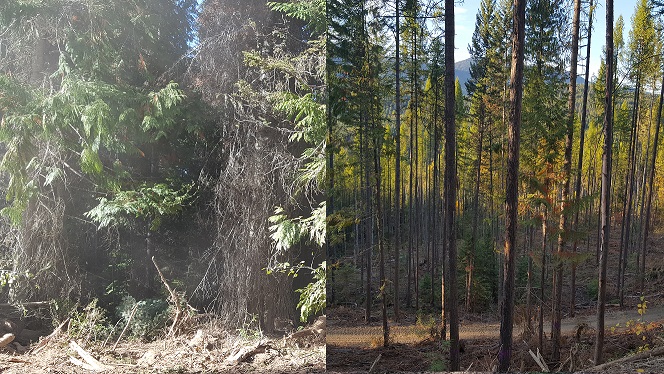This month we had an opportunity to tour the “A to Z” project, a major forest restoration effort that is transforming an overgrown, fire-prone national forest into a healthier and more resilient landscape that benefits wildlife habitat, public access, recreation and logging and mill jobs in nearby Colville, WA. It’s a product of forest collaboration among diverse interests and implemented through a unique public-private partnership. Here’s a photo of a treated stand compared to an untreated stand in the same forest:

In this case the collaborative Northeast Washington Forestry Coalition determined action was needed to restore local forests before they were lost to wildfires. Vaagen Brothers Lumber of Colville stepped up and invested its own money to help the Forest Service meet its planning and implementation costs under National Environmental Policy Act. Through a stewardship contracting agreement, an independent environmental firm was tasked with studying the landscape and designing the projects, reporting directly (and only) to the Forest Service and ensuring that the two projects under the A to Z plan would be implemented within federal law.
Last year coalition members held a ceremony to celebrate the implementation of the plan and the beginning of forest thinnings. Less than a week later an environmental group filed a lawsuit to halt the project. Fortunately the Ninth Circuit denied an injunction and rejected each of the group’s claims, finding there was not a likelihood of success, “much less” serious questions on the merits of the claims. The court noted that this is a forest restoration project and “was the result of a multi-year collaboration among elected officials, environmental organizations, Native American tribes, the timber industry, and community organizations.” The Ninth Circuit’s denial of injunctive relief means the project’s implementation can continue at least through final judgment, which is likely at least a year away.
Environmental groups have criticized the Resilient Federal Forests Act for giving the Forest Service the ability to expedite projects on forests that are at immediate risk of catastrophic wildfire, disease and insect infestations. Yet it is intended to support efforts such as the A to Z project by enabling collaboratives to develop landscape-scale projects up to 30,000 acres. And the bill works to protect needed forest projects from obstructive lawsuits. You can support this bill by clicking here.



